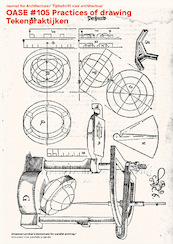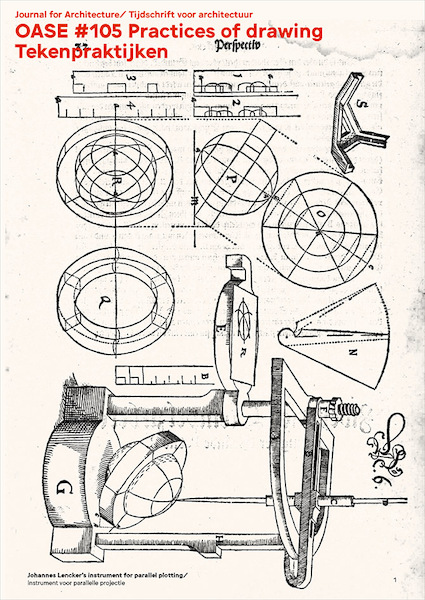| Prijs | € 22,95 |
Niet beschikbaar
Paperback | April 2020 |
Beoordeel dit boek als eerste!Beschrijving
Specificaties
- Uitgever
- nai010 uitgevers/publishers
- ISBN
- 9789462085541
- Bindwijze
- Paperback
- Publicatiedatum
- April 2020
- Categorie
- Wetenschappelijk
- Taal
- Meerdere talen
- Aantal Pagina's
- 128
Beschrijving
For Dutch see below. —ENGLISH— It is hard to overstate the importance of drawing for architectural practice. Ever since antiquity, architects have relied on drawings to conceptualize ideas, provide instructions for workers and construct their ideas into architecture. This involvement with drawing has always been mediated through different technologies; drawing is technology. The specific practices of drawing have changed over time, however, adapting to changing technologies. In doing so they have altered the production of architecture. This issue of OASE looks at architectural drawings as dynamic processes that shape architectural thinking. To give insight into the relation between the tools and techniques for drawing, and the resulting architectural production and construction, OASE 105 draws from case studies that range from early sections in antiquity, the experimentation with drawing techniques on medieval construction sites, the automatization of orthographic drawing in the early Renaissance, to the more specific cases of George Aitchison’s elevations, John Ruskin’s drawing lessons, Heinrich Tessenow’s perspectives, El Lissitzky’s axonometric drawings, Lina Bo Bardi’s surrealist tableau’s, Frank Gehry’s sketches and Tony Fretton’s CAD drawings. —DUTCH— Het belang van het tekenen voor de architectuurpraktijk is moeilijk te overschatten. Architecten maken al sinds de oudheid gebruik van tekeningen om hun denkbeelden te conceptualiseren, arbeiders instructies te geven en architectonische ideeën vorm te geven. Deze band met het tekenen kwam altijd tot stand door verschillende technieken: tekenen is techniek, maar de tekenpraktijk zelf is in de loop der tijd veranderd, dit in samenhang met technologische veranderingen. Gaandeweg is zo ook de productie van de architectuur veranderd. Dit nummer van OASE vat de totstandkoming van de architectonische tekening op als een dynamisch proces dat het architectonische denken vormgeeft. Om inzicht te verschaffen in de relatie tussen tekengereedschappen en -technieken en de daaruit voortvloeiende architectonische productie en constructie laat OASE 105 zich inspireren door een aantal gevalsanalyses. Deze lopen uiteen van profielen uit de vroege oudheid tot experimenten met tekentechnieken op middeleeuwse bouwplaatsen, de automatisering van het orthografisch tekenen in de vroege Renaissance en meer specifieke voorbeelden zoals de vooraanzichten van George Aitchison, de tekenlessen van John Ruskin, de perspectieven van Heinrich Tessenow, de axonometrische tekeningen van El Lissitzky, de surrealistische taferelen van Lina Bo Bardi, de schetsen van Frank Gehry en de CAD-tekeningen van Tony Fretton.
Schrijf een recensie
Specificaties
- Uitgever
- nai010 uitgevers/publishers
- ISBN
- 9789462085541
- Bindwijze
- Paperback
- Publicatiedatum
- April 2020
- Categorie
- Wetenschappelijk
- Taal
- Meerdere talen
- Aantal Pagina's
- 128











